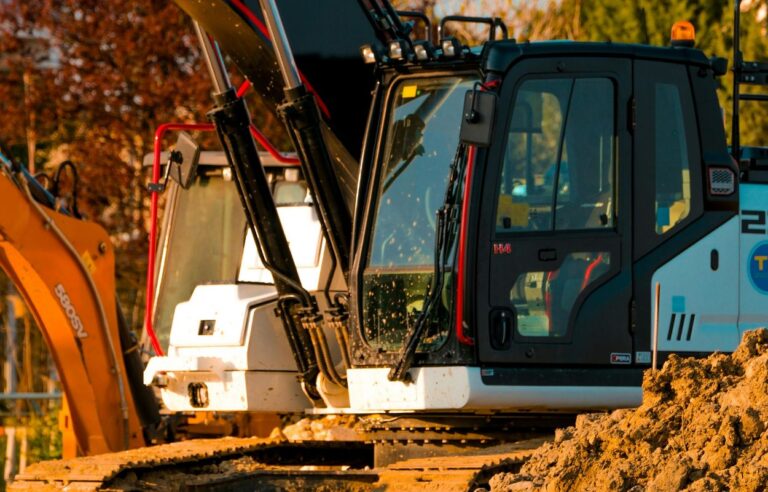When most people think about demolition or deconstruction, they picture the action: walls coming down, materials being hauled away, and the site being cleared for something new. But the truth is, the most important part of any project doesn’t happen with hammers, saws, or heavy machinery. It happens before the first nail is pulled—the planning stage.
Whether you’re tearing down a shed, dismantling an old home, or preparing for a large commercial project, planning is what separates smooth, successful jobs from expensive headaches. Deconstruction and demolition may look straightforward, but without careful coordination, projects can run into delays, safety hazards, and ballooning costs.
Here’s why project planning matters so much—and how the right approach makes all the difference.
THE DIFFERENCE BETWEEN DECONSTRUCTION AND DEMOLITION
Before diving into planning, it helps to understand the difference between these two approaches:
- Demolition is the faster, more forceful process. Structures are knocked down quickly, often with machinery, and materials usually end up in the landfill.
- Deconstruction is a slower, more methodical approach. Instead of smashing, crews carefully dismantle structures to salvage wood, metal, fixtures, and other materials for reuse or recycling.
Both methods have their place. Demolition is often best for projects where speed is essential, while deconstruction makes sense when material recovery and sustainability are priorities. No matter which method you choose, planning is key.
WHY PLANNING IS ESSENTIAL
SAFETY FIRST
Safety is the number-one reason planning matters. Every project involves risks—falling debris, unstable structures, hazardous materials, and more. Planning identifies these risks early and ensures safety protocols are in place. Without preparation, accidents are more likely, and accidents cost time, money, and lives.
COST CONTROL
Poor planning almost always leads to overspending. Unexpected issues like hidden asbestos, structural surprises, or unclear waste disposal add up fast. With proper planning, budgets account for these variables, reducing the risk of costly surprises.
WASTE MANAGEMENT
Demolition generates a lot of debris. Without planning, most of it ends up in a landfill. But with deconstruction planning, materials are sorted, salvaged, and recycled. This not only lowers dump fees but also benefits the environment.
TIMELINE MANAGEMENT
Every project has a deadline. Without planning, timelines quickly unravel—delays pile up, subcontractors are left waiting, and costs rise. A detailed plan outlines each phase of the project, keeping crews coordinated and on track.
LEGAL AND REGULATORY COMPLIANCE
Permits, inspections, and disposal regulations all need to be considered before starting. Failing to comply with local rules can result in fines or project shutdowns. Planning ensures you’re meeting all legal requirements from day one.
WHAT GOES INTO A PROJECT PLAN?
A strong demolition or deconstruction plan covers more than just a start and end date. Here’s what professionals include:
- Site Assessment – Inspecting the building for hazards like asbestos, mold, or unstable structures.
- Permits and Approvals – Securing the paperwork required by local municipalities.
- Material Recovery Strategy – Identifying what can be salvaged, recycled, or donated.
- Waste Disposal Plan – Determining how remaining debris will be handled and where it will go.
- Equipment Needs – Choosing the right machinery or tools for the job.
- Crew Assignments – Outlining responsibilities for every member of the team.
- Timeline and Milestones – Breaking the project into phases to keep progress on track.
- Safety Protocols – Ensuring workers are protected and the site is secure.
This level of planning takes time, but it pays off with smoother operations and fewer surprises.
HOW PLANNING SAVES MONEY
Some homeowners and property managers try to rush into demolition, thinking it will save money. But skipping planning usually does the opposite. Consider these examples:
- Unsorted Waste – If materials aren’t separated, everything gets billed at mixed-waste landfill rates, which are expensive.
- Hidden Hazards – Discovering asbestos mid-project means paying for emergency abatement and pausing work.
- Equipment Misuse – Using the wrong machinery damages salvageable materials, eliminating resale or reuse value.
By planning ahead, you avoid these pitfalls and keep costs under control.
THE ROLE OF PROFESSIONALS
While it’s possible to sketch out your own plan, professionals bring expertise you might miss. They’ve seen countless projects and know the risks, shortcuts, and solutions. More importantly, they have the connections—whether it’s recycling centers, salvage yards, or local regulators—to keep everything moving smoothly.
For example, crews that specialize in deconstruction services in Port Alberni not only dismantle buildings carefully but also coordinate salvage and recycling efforts. They know which materials can be reused locally, which can be donated, and how to minimize waste disposal costs. By hiring experts, you get more than labor—you get a project partner who knows how to plan effectively.
WHY PLANNING IS GOOD FOR THE ENVIRONMENT
Construction and demolition waste makes up a significant portion of landfill volume worldwide. Without planning, almost all materials from a project end up buried in the ground. But with proper deconstruction planning, much of it can be diverted.
- Wood can be reused for flooring, furniture, or framing.
- Metal can be melted down and recycled into new products.
- Fixtures and Appliances can be resold or donated to reuse centers.
- Concrete and Brick can be crushed and repurposed as fill material.
The result? Less waste, lower emissions, and a more sustainable future.
TIPS FOR HOMEOWNERS AND PROPERTY MANAGERS
If you’re preparing for a demolition or deconstruction project, here are a few tips to make sure planning doesn’t get overlooked:
- Start early—planning takes time, so don’t wait until the last minute.
- Ask your contractor about their waste management strategy.
- Budget for surprises—it’s better to have a cushion than to be caught off guard.
- Prioritize safety—nothing saves time or money more than preventing accidents.
- Consider deconstruction—even if it takes longer, the material savings and environmental benefits are worth it.
FINAL THOUGHTS
Demolition and deconstruction may look like brute force, but success comes down to planning. From safety and cost savings to waste management and sustainability, planning is what keeps projects on track and under control.
If you’re preparing for a project in Port Alberni, don’t overlook the importance of proper planning. Partnering with professionals who provide deconstruction services in Port Alberni ensures your project is safe, efficient, and environmentally responsible.
Because in construction, just like in life, rushing in without a plan almost always leads to more problems than solutions.


